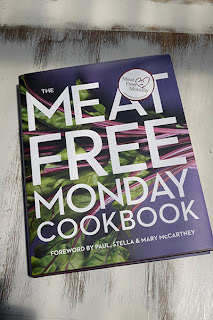From What’s Cooking
Vegetarian, Jenny Stacey, Paragon, 2000.

 The cookery book that I used for this said that the dish
could be made in advance and should be kept in the refrigerator. I made it with
some to eat after a couple of hours and kept some for the next day. The ones I
kept had separated when I came to serve them. They still tasted all right but I
wouldn’t keep them in future if I made them again.
The cookery book that I used for this said that the dish
could be made in advance and should be kept in the refrigerator. I made it with
some to eat after a couple of hours and kept some for the next day. The ones I
kept had separated when I came to serve them. They still tasted all right but I
wouldn’t keep them in future if I made them again.
It was easy to make. The raspberries were put through a
blender with some icing sugar. Some
crème fraîche was mixed in a bowl with vanilla essence and the raspberries stirred
into it. Egg whites were whisked until stiff and folded into the raspberries.
It now only had to be put into serving glasses and chilled.
It was a pleasant sweet and useful if you have egg whites
left over but I’ve had much better desserts.
Taste: ✔✔✔
Ease of
cooking: ✔✔✔✔















































